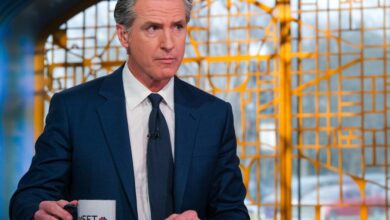Lawrence Summers Warns of Lingering Inflation Threats in the U.S Economy

Former U.S. Treasury Secretary, Lawrence Summers, remains skeptical about the United States’ battle against inflation, indicating that the nation’s economy is still experiencing significant heat. Summers, known for his hawkish stance on inflation, believes that the massive stimulus measures implemented during the COVID-19 pandemic and other factors have contributed to the current inflationary pressures. As the Federal Reserve cautiously adjusts interest rates to combat rising prices, the central bank faces the challenge of finding a balance between cooling the economy and avoiding a potential recession. Additionally, Summers has expressed concerns about pockets of distress in the commercial real estate sector, which could further impact the financial system.
The Persistence of Inflation:
Summers asserts that the United States is currently experiencing underlying inflation in the range of 4.5% to 5%, indicating that the inflationary pressures are far from resolved. He attributes this to the significant fiscal stimulus measures undertaken during the pandemic and the resulting impact on prices throughout the economy. His concerns extend to low unemployment rates and substantial wage growth, which he believes are contributing factors to the rising prices. In Summers’ view, achieving economic stability and bringing prices under control may require an unemployment rate as high as 6%.
Federal Reserve’s Response:
Summers’ hawkish views on inflation have resonated with the Federal Reserve, prompting the central bank to implement interest rate hikes consistently since March 2022. However, following the banking crisis earlier this year, the Federal Reserve faces a delicate decision regarding further interest rate changes. Most economists anticipate that the central bank will pause its rate hikes this month to avoid exacerbating the credit market tightening caused by previous increases.
Inflation Trends and Projections:
While U.S. inflation has shown some signs of decline, with year-on-year price increases dropping to 4.9% in April from a peak of 9% nearly a year ago, core inflation (excluding food and energy prices) remains elevated at 5.5% year-on-year. The Bureau of Labor Statistics is set to release inflation figures for May, with projections suggesting a 4.2% year-on-year increase in the consumer price index and a 5.3% increase in core inflation. These persistent inflationary pressures indicate the need for continued vigilance.
Concerns in Commercial Real Estate:
Summers also highlights concerns in the commercial real estate sector, particularly regarding the impact of remote working on office space demand. As companies adopt work-from-home arrangements, tenants are reducing their office footprints, placing significant strain on building owners. Moreover, increasing interest rates will lead to higher loan payments for borrowers, potentially leading some to default. This scenario could result in distress within the commercial real estate market, subsequently affecting smaller banks that provide the majority of commercial real estate lending.
Conclusion:
Former U.S. Treasury Secretary Lawrence Summers raises valid concerns about the ongoing battle against inflation in the United States. Despite some signs of improvement, core inflation remains elevated, warranting continued attention from policymakers. The Federal Reserve’s approach to interest rate adjustments will play a crucial role in striking a delicate balance between managing inflation and avoiding detrimental consequences for the financial system. Furthermore, the potential challenges within the commercial real estate sector highlight the need for proactive measures to mitigate risks and support economic stability. As the Federal Reserve convenes to evaluate future rate changes, policymakers must carefully consider the advice of experts like Summers to navigate these complex economic challenges successfully.




